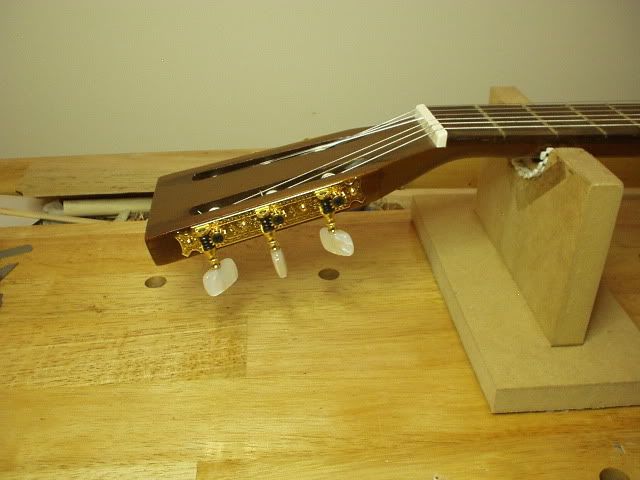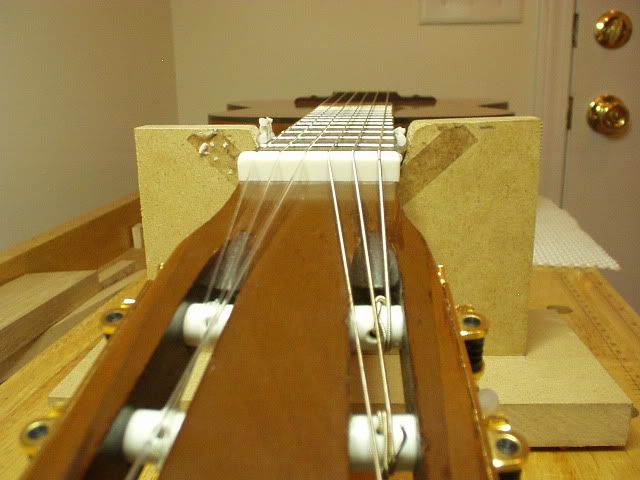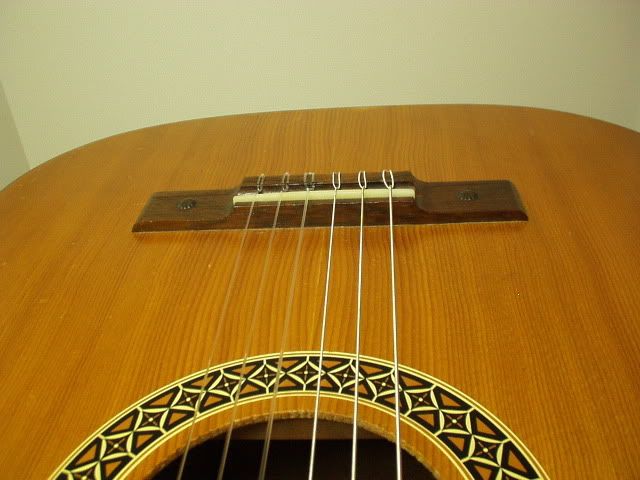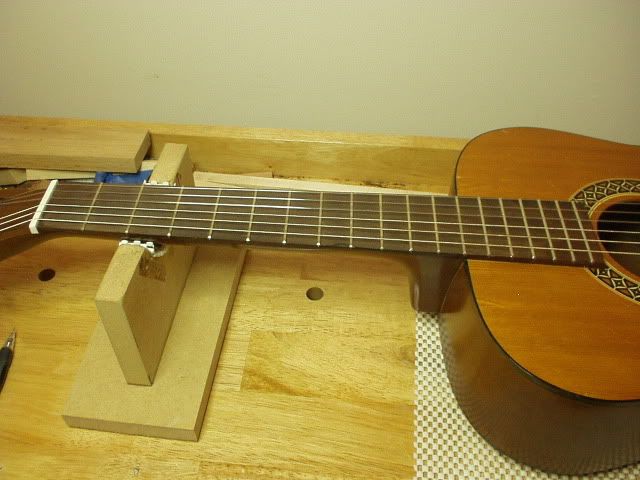The fretboard was apparently not leveled well at the factory. That is why the frets were so low in places. After removing the frets I proceeded to level the fingerboard. This is an important step, but it is often overlooked by some guitar technicians. Classical guitars have flat (non radius) fret boards, which made this a little simpler.
Most classical guitars do not have truss rods. This one doesn't either. It has about .008" of relief built in to the neck (without any string tension). So, in order to straighten out the neck, I had to place 20 lbs of weight at the headstock. And counter balance it with 10 lbs at the body. I place the fulcrum under the neck at the 5th fret position. Then I use the flattest thing I own (a plane) to flatten the fingerboard. I used stick-on sandpaper on the bottom of the plane (after retracting the blade).
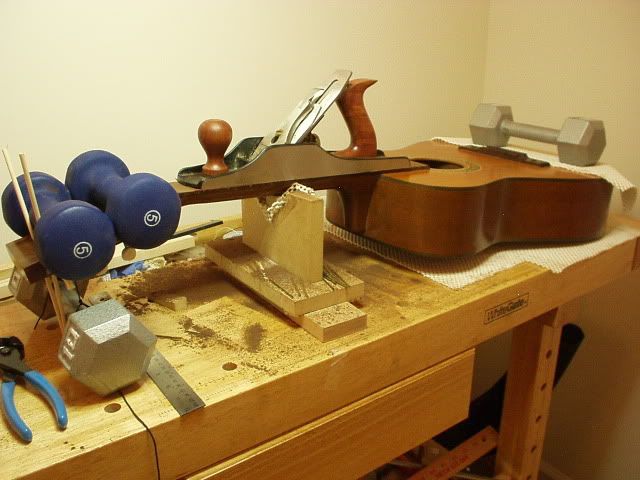
When the weights are removed, the neck returns to normal and we have the proper relief (without any tension).
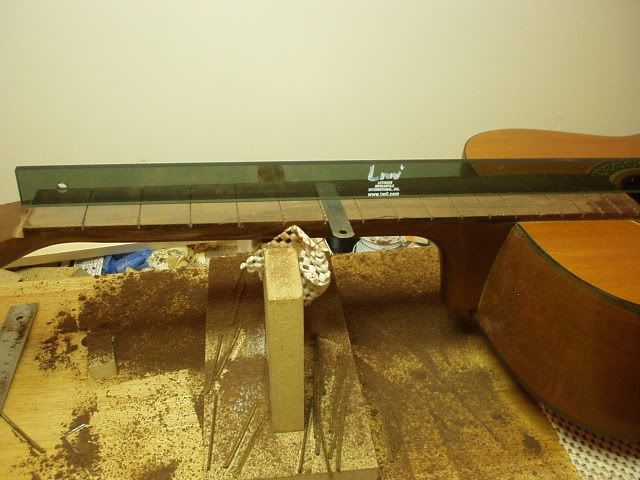
I use the backside of an exacto knife blade to clean out the sawdust from the fret slots.
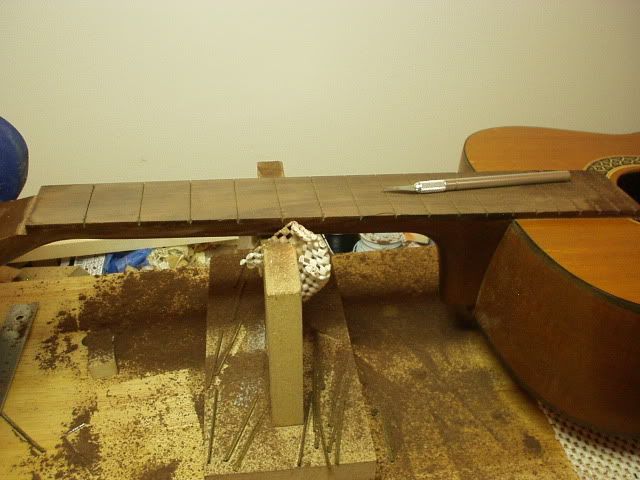
Installing the frets involved checking the depth of each fret slot. Then using a special saw, with a proper size kerf, to deepen the slots as necessary. Then, using a small triangular file, clean up the top edges of each slot. Then cutting to length, and hammering in each fret with a special fretting hammer. I use a triangular fret rocker to check for any frets that might be sticking up a little.
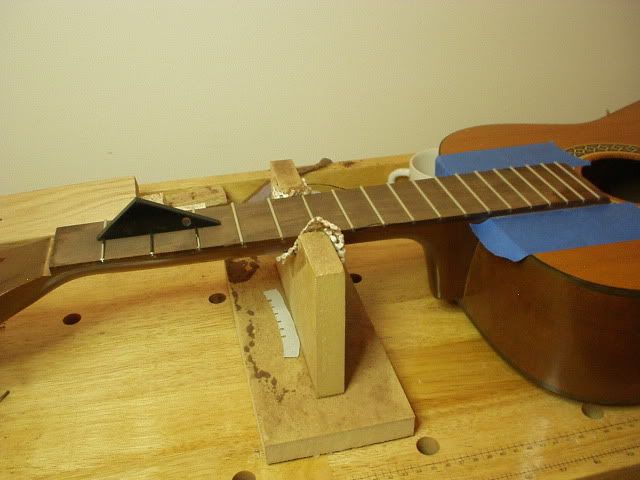
The effort to level the fretboard paid off well. The frets are all level and probably won't require any dressing, except for the fret ends.
I plan to make a new bone nut for this guitar. And will probably change out the tuners for some good ones. Can't wait to see how it plays after all the work.



